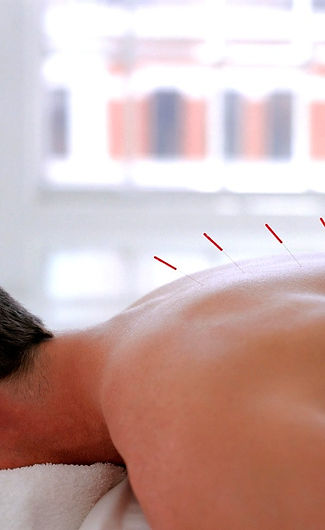
Shirley McWilliams Acupuncture, Inc.
Treatments
Acupuncture
Acupuncture means insertion of needles into superficial structures of the body such as the skin, subcutaneous tissue and muscles at acupuncture points or as they are called "acupoints". The acupoints are stimulated manually or with a microcurrent. This aims to influence the flow of blood. According to Traditional Chinese Medicine (TCM), this relieves pain and prevents various diseases.
Acupuncture has been shown to be effective for treating fibromyalgia, pain, nausea, headache, menstural cramps, sports injuries, myofascial pain, arthritis, carpal tunnel syndrome, asthma, digestive disorders, skin conditions, depression, anxiety, insomnia, and allergies.
There are at least three possible explanations for why acupuncture works:
-
Opioid Release: During acupuncture, endorphins that are part of your body’s natural pain-control system may be released into the brain and spinal cord. This reduces pain, much like taking pain medication.
-
Spinal Cord Stimulation: Acupuncture may stimulate the nerves in the spinal cord to release pain-suppressing neurotransmitters, known as the “gate theory.”
-
Blood Flow Changes: Acupuncture needles may increase the amount of blood flow in the area around the needle, supplying additional nutrients or removing toxic substances or both, to promote healing.
Acupuncture Is Recommended For:
-
Enhanced Immune Response
-
Increased Joint Range of Motion
-
Muscle Relaxation
-
Pain Reduction
-
Post Surgical Pain and Swelling
-
Reduction of Inflammation and Swelling
-
Restoration Of Blood Flow To Limbs and Organ
Effective for the Following Conditions:
-
Addictions/Smoking Cessation
-
ALL Musculoskeletal and Joint Pain:
neck/back/shoulder/hips/knees/ankles
-
ANY arthritis/bursitis/tendonitis
-
Anxiety/Depression/Stress
-
Arthritis/Osteo and Rheumatoid
-
Asthma/Allergies/Sinusitis
-
Bell’s Palsy/Trigeminal Neuralgia
-
Carpal Tunnel Syndrome
-
Chronic Fatigue/Fibromyalgia
-
Digestive Disorders/IBS/Constipation
-
Fertility Issues
-
Headaches/Migraines
-
Perimenopause/Menopause
-
Plantar Fasciitis/ Bone Spurs
-
Menstrual Irregularities
-
Sciatica
-
Scoliosis
-
Weight Loss
Modalities
Tui na
Tui na is generally used for relaxation, rather as a treatment to adress specific patterns of disharmony. Practitioners us it for many of the same reasons and according to the same principles as acupuncture. Like acupuncture, TCM uses tui na to harmonize yin and yang in the body by manipulating the Qi in the acupuncture channels. Tui na includes what is populary known as "acupressure," where practitioners use finger pressure intread of needles to stimulate the acupuncture points.
Qigong
Qigong is a TCM system of exercise and meditation that combines regulated breathing, slow movment, and focused awareness, purportedly to cultivate and balance qi.
Cupping
Cupping is a type of Chinese massage, consisting of placing several glass "cups" on the body. A match is lit and placed inside the cup and then removed before placing the cup against the skin. As the air in the cups is heated, it expands, and that allows the cup to stick to the skin via suction, and when combined with massage oil the cups can be slid around the back, offering reverse pressure massage.
Gua sha
Gua Sha is abrading the skin with pieces of smooth jade, bone, animal tusks or horns or smooth stones, until red spots and bruising cover the area to which it is done. The red spots and bruising take 3 to 10 days to heal, there is often some soreness in the area that has been treated.
Moxibustion
Moxibustion involves burining mugwort near the skin at an acupuncture point.
